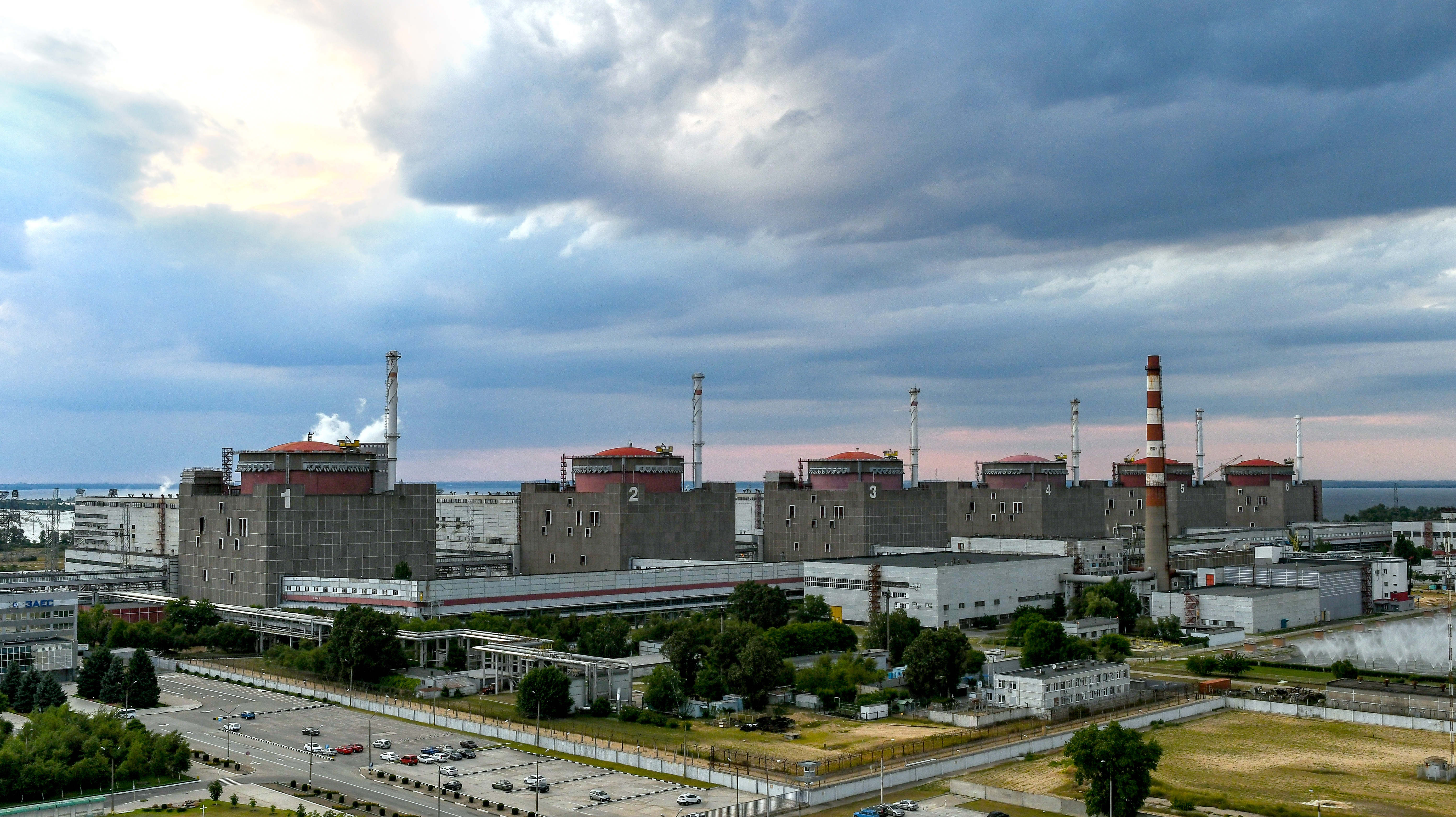The Russian Attack on Ukraine and Risks to Nuclear Infrastructure
Russia’s full-scale invasion has increased the risks for civilian nuclear infrastructure in Ukraine. Russian troops so far have captured the former Chernobyl nuclear power plant complex and Europe’s biggest nuclear power plant, Zaporizhzhia in Enerhodar. The intense use of artillery, rockets, and bombs may become a direct threat to various nuclear sector centres in Ukraine. However, the probability for contamination is low. Nevertheless, in case of such a scenario, its impact on Ukraine and its neighbours would be serious, and in an extreme case, catastrophic.
 Fot. Dmytro Smolyenko/Zuma Press/Forum
Fot. Dmytro Smolyenko/Zuma Press/Forum
What does Ukraine’s nuclear sector look like?
After the collapse of the Soviet Union, Ukraine inherited a large civilian nuclear sector. It consists of the four nuclear power plant complexes at Enerhodar (Zaporizhzhia), Yuzhnoukrainsk, Khmelnitsky, and Varash (Rovne), comprising altogether 15 reactors, the majority of which were operational at the start of the Russian invasion. These plants produced almost half of Ukraine’s electric energy needs and their operations were crucial for its economy. Moreover, in Kharkiv and Kyiv, there are two research reactors, as both cities have prestigious nuclear physics research centres. Ukraine also has five nuclear-waste storage sites, as well as administers the contaminated and closed zone of the former Chernobyl plant, with its containment “sarcophagus” and “arch” above the ruins of the 1986 catastrophe. With the end of the Soviet Union and denuclearisation, Ukraine gave up its nuclear warheads and fissile materials for military purposes (although Russia is still producing disinformation about this, fabricating claims that Ukraine still has such material).
Which Ukrainian nuclear sites have been Russia’s targets so far?
On 24 February, Russian troops from Belarus started their offensive on Kyiv and captured the area and installations of the former Chernobyl plant, taking the scientific-technical staff as hostages. The intense movement of Russian armoured columns in the area, with their heavy vehicles producing dust and disturbing soil, led to slightly increased Gamma radiation around Chernobyl and in the closed zone. On the same day, as the Russian offensive moved into the south of Ukraine, operators shut down two reactors in Enerhodar (later a third reactor) and three reactors in Yuzhnoukrainsk. On 27 February, a nuclear-waste disposal site near the suburbs of Kyiv was targeted by Russian artillery and bombs, following similar attacks two days earlier on a smaller storage site for nuclear waste in the suburbs of Kharkiv. On 2 March, Russian troops moved into the vicinity of Enerhodar, the largest nuclear power plant in Europe. Its scientific, technical, and security staff announced that they were ready to defend the city and plant, but during the night of 4 March, a Russian assault resulted in the capture of the plant and a fire in an administration building, which was eventually supressed.
What are the main risks to nuclear facilities?
The first risk is tied to the scale of the Russian attacks and the large nuclear sector of Ukraine. The strategic importance of Kyiv in Russia’s plans imply continued and massed movement of troops (probably also of Belarusian forces) in the contaminated zone around Chernobyl. The second and more serious risk is tied to the Russians’ intense use of heavy artillery, ballistic and cruise missiles, and bombing. These tactics might result in incidental damage to turbines, transformers, and other systems or safety measures that are not designed for such intense conflict. At Enerhodar, concerns were raised about the resilience of dams on the Dnipro that supply water to cool the reactors. A sudden disruption or cut-off of an operating reactor would result in a meltdown in its core, which would have similar consequences to the nuclear catastrophe at Chernobyl. The third main risk is tied to the generally low preparedness of the Russian troops for securing captured nuclear sites in Ukraine and the apparent lack of any Russian experts on scene. That also raises the issue of the responsibility for cooperation—and/or refusal of it—by Ukrainian scientists and technicians.
Are the citizens of Ukraine and neighbouring states at higher risk of radiation?
Since the start of the war, Ukraine has continuously cooperated with the International Atomic Energy Agency (IAEA), showing full responsibility and care in safeguarding the country’s nuclear infrastructure. However, the attack from Belarus has temporary and locally increased radiation in the Chernobyl-Pripyat area, which Russia has tried to use to create disinformation and panic in NATO states. Russia, with its shelling of civilian sites, is increasing the risk of potential disruption and contamination, which is in violation of its declaration to the IAEA in 2009 about the recognition of every military strike or threat of this as a violation of international law, the UN Charter, and IAEA Statute. With all the risks accompanying the war initiated by Russia, the potential of higher contamination might come with a disruption or damage to one of the operating reactors. This scenario seems unlikely, but however remote it may be, it still holds catastrophic implications for Ukraine all its neighbours, including Belarus and Russia.


